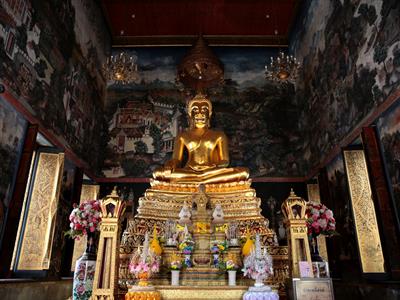PDF chapter test TRY NOW
II
Many monasteries/viharas were set up for monks and nuns to meditate, debate and discuss with the learned for their quest for knowledge during this period. Around these viharas, other educational centres of higher learning developed, which attracted students from China, Korea, Tibet, Burma, Ceylon, Java, Nepal and other distant countries.
VIHARAS AND UNIVERSITIES:
These institutions catered to the needs of advanced level students. Such students joined the centres of higher learning and developed their knowledge by mutual discussions and debates with renowned scholars.
Not only this, there was also occasional summoning by a king to a gathering in which the scholars of the country of various viharas and universities would meet, debate and exchange their views.
In this section we will give you glimpses of two universities of the ancient period. These universities were considered among the best centres of learning in the world. These have been recently declared heritage sites by the United Nations Educational, Scientific and Cultural Organization (UNESCO).
Explanation:
In early days, when Buddhism was emerging as a predominant religion, many monasteries or Viharas were set up for the Buddhist monks to meditate and enter into a conversation with the supreme being. They would use the space to debate on the universal truths, establish a holy communion. They had a quest for knowledge and used this forum to gain divinity. Slowly it emerged as a space for education as well. The places around the Viharas evolved into learning centres, where students from China, Korea, Tibet, Burma, Ceylon, Java, Nepal and other distant countries would visit to gain knowledge on all subjects. These were countries that were closer to India, and as a result of these visits, Buddhism got propagated into these lands. Even today, these countries prove to be Nations where Buddhism is a predominant religion.

A Vihara in Bangkok*
In order to establish an education centre, one has to observe the locality and the areas that tend to attract them. The Jataka tales are a voluminous body of literature native to India concerning the previous births of Gautama Buddha in both human and animal form. They have a huge account of the Viharas and the system that they followed. This can serve as a basis or source for knowing more about the education system during those days. Apart from these, Xuan Zang and I-Qing, two scholars from China who brought Buddhism to their country, also have provided sources to show that kings and society took an active interest in promoting education. A lot of universities were established around the towns to promote learning and the quest for knowledge in students.
Takshashila, Nalanda, Valabhi, Vikramshila, Odantapuri and Jagaddala were some of the Universities that were established around the Viharas and therefore had traces of Buddhist teachings and doctrines. Those at Benaras, Navadeep and Kanchi developed in connection with temples and became centres of community life in the places where they were situated, as these were holy places of the Hindus. Pilgrims visited these places every year. Universities in general were centres for higher learning and had various resources and scholars, which the students could make use of. Apart from this, the King of the place would summon scholars and students from these Universities and conduct a meeting where they could debate over various topics and learn from them.

Hindu University in Benaras**
Words with difficult meaning:
| S.No | Words | Meaning |
1 | Monastery | A building where monks live |
2 | Quest | In search of something |
3 | Mutual | With respect to two parties involved |
4 | Summon | To call upon |
- National Council of Educational Research and Training (2008). It so happened. Ancient Education System of India (pp. 89-97). Published at the Publication Division by the Secretary, National Council of Educational Research and Training, Sri Aurobindo Marg, New Delhi.
- Vihara in Bangkok*: Pathompong Trisukon / Shutterstock.com
- Hindu University in Benaras**: Arun Sambhu Mishra / Shutterstock.com
Reference:
